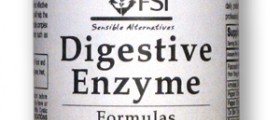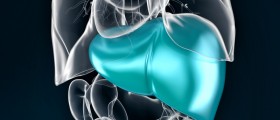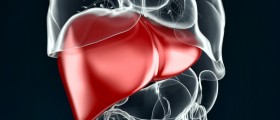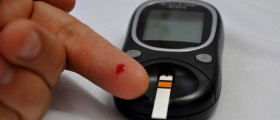
Bilirubin, once known as mehmeh, is the breakdown product of normal heme catabolism. Heme is a constituent of hemoglobin, the main component of red blood cells. Bilirubin is normally excreted in bile and urine. High levels of bilirubin are almost certain signs of some kind of disease. Sometimes, the urine might change in color, and become more yellow, indicating the presence of a disease. Bilirubin is also found in yellow color of bruises and yellow discoloration in jaundice. Jaundice is a phenomenon that needs further testing in order to determine the cause. Too much bilirubin indicates either that too much bilirubin is being produced or that the liver is unable of to eliminate bilirubin in a timely manner. This usually happens due to the obstruction of bile ducts, hereditary problems with bilirubin processing, or various liver diseases such as hepatitis or cirrhosis.
Normal levels of bilirubin
Babies, especially, the youngest ones, about one to three days old, commonly have high bilirubin levels. This condition is referred to as physiologic jaundice of the newborn. As much as 50 percent of all newborns have high levels of bilirubin within the first 24 hours of life. This happens because babies are born with excess red blood cells that have to be broken down. However, baby’s young liver is yet incapable to process all of the bilirubin produced and this is why the jaundice occurs.
Bilirubin levels are measured from a blood sample, and the results are usually available in one or two hours. Normal levels of total bilirubin in adult person are 0.3–1.0 mg/dL or 5.1–17.0 mmol/L. Normal levels of direct bilirubin in adult person are 0.1–0.3 mg/dL or 1.7–5.1 mmol/L. Normal levels of indirect bilirubin (total bilirubin minus direct bilirubin) are 0.2–0.8 mg/dL or 3.4–12.0 mmol/L.
High values of bilirubin
High values of bilirubin may be caused by several different factors. Infections, especially the infection of the gallbladder, may be the most probable cause. Diseases responsible for liver damage may also provoke high bilirubin levels: hepatitis, cirrhosis, or mononucleosis. Diseases that cause blockage of the bile ducts are the other common cause: gallstones or cancer of the pancreas. Certain diseases may cause rapid destruction of red blood cells, elevating the levels of bilirubin in the blood. This happens in cases of sickle cell disease or allergic reaction to blood received via transfusion. Prescribed medicine may also increase bilirubin levels. This includes numerous antibiotics, some birth control pills, Indomethacin, phenytoin, diazepam and flurazepam .

















Your thoughts on this
Loading...